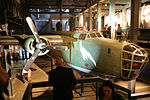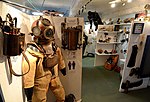Jewish Hospital, Warsaw

The Jewish Hospital in Warsaw, The Jewish Hospital in Czyste - a Jewish medical facility operating from 1902 to 1943 in Warsaw. For many years considered to be one of the best and most modern hospitals in Poland. The whole complex consisted of 8 separate hospital pavilions with surgical, ophthalmic and gynecological wards, skin and venereal diseases, pulmonary, throat and ear diseases, infectious, internal and nervous diseases, mental diseases and a midwifery with a research laboratory. The hospital also included an administration building, a synagogue, a pre-burial house, kitchens, laundries, freezers, a boiler room, a coach house, stables, a disinfection chamber, a food warehouse, a convalescent home and other smaller buildings. In total, there were 17 buildings for different purposes.
Excerpt from the Wikipedia article Jewish Hospital, Warsaw (License: CC BY-SA 3.0, Authors, Images).Jewish Hospital, Warsaw
Marcina Kasprzaka, Warsaw Wola
Geographical coordinates (GPS) Address Nearby Places Show on map
Geographical coordinates (GPS)
| Latitude | Longitude |
|---|---|
| N 52.226 ° | E 20.97116 ° |
Address
Szpital Wolski im. doktor Anny Gostyńskiej
Marcina Kasprzaka 17
01-211 Warsaw, Wola
Masovian Voivodeship, Poland
Open on Google Maps










